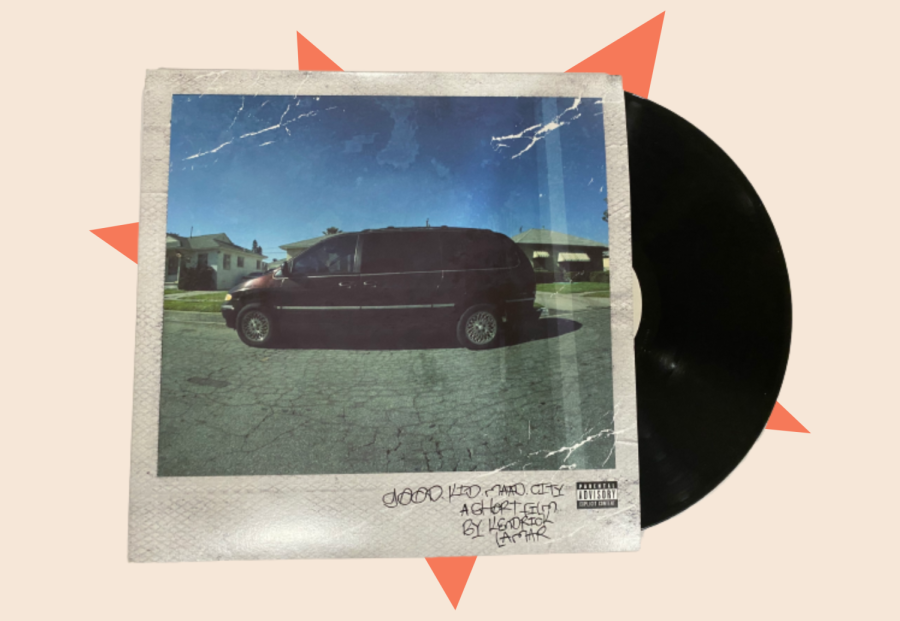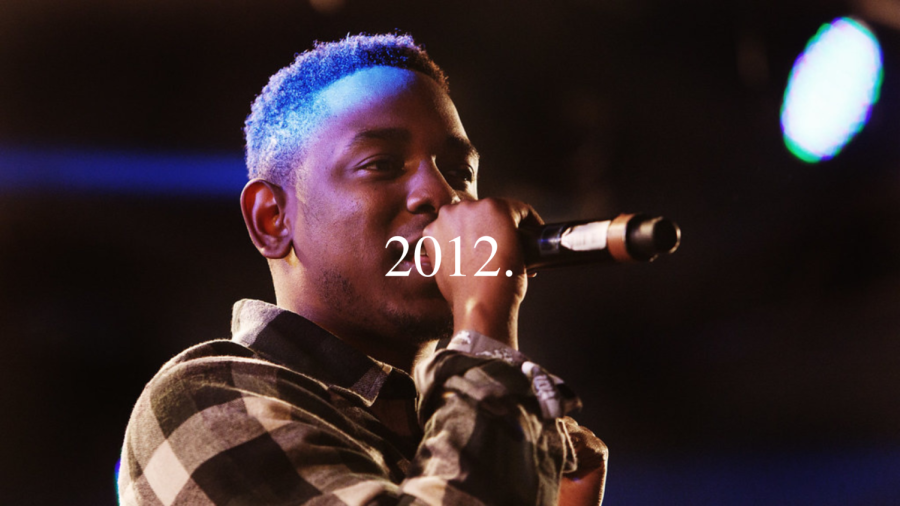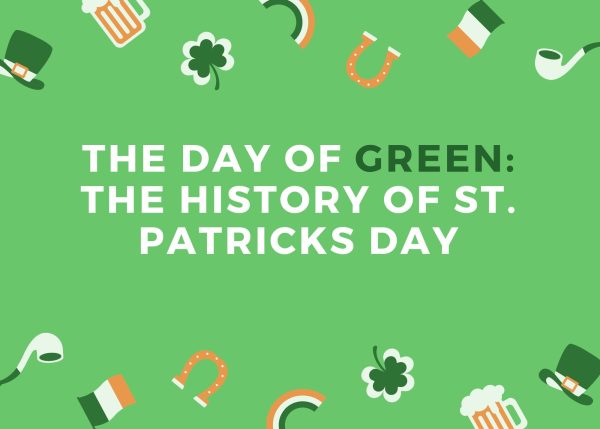Revisiting the m.A.A.d city of Kendrick Lamar
Released October 22, 2012, Kendrick Lamar’s concept album “good kid, m.A.A.d city” remains a potent experience where the renowned artist reveals his upbringing in a climate of gang violence and police brutality. With features from artists such as Drake, Dr. Dre and Mary J. Blige, the listener follows Lamar’s journey in Compton, a city that he adores but resents simultaneously.
October 22, 2022
Within the depths of California, the city of Compton garnered attention for its viciously high crime rate and became notorious for gang violence. As tensions between Pirus and Crips rose in the late 20th century, murder transformed into an everyday occurrence for several Compton residents. During this chaos, Kenny and Paula Duckworth moved from Chicago to Compton in 1984 and would soon give birth to the good kid Kendrick Lamar. Seeing his first murder at five years old, he learned from a young age to articulate his feelings through pen and paper and wrote stories that soon transformed into poems which then formed into lyrics that helped build his career as an artist. All of his trauma and triumphs resulted in the release of his groundbreaking studio album “good kid, m.A.A.d city”, an album that was released exactly 10 years ago.
Recognized as the greatest concept album of all time, “good kid, m.A.A.d city” acts as an autobiographical tale of Lamar’s teenage life in the city of Compton. He sets the scene perfectly with the first track, “Sherane a.k.a Master Splinter’s Daughter”, where 17-year-old Lamar finds himself in love with a girl, but their relationship turns sour the moment her cousins jump him for seeing Sherane.
His execution in fulfilling the concept of a coming-to-age story comes to fruition on the third track, “Backseat Freestyle”, where Lamar raps about owning a Maserati and wanting money and power while in the backseat of someone else’s car and living in a dangerous environment. Even after 10 years, the gritty production, his various flow switches and his iconic bars make for an addictive yet nostalgic song.
On this album, Lamar showed raw talent in building stories in songs such as “The Art of Peer Pressure” and “good kid”, where he vividly describes how his friends pressured him into drugs and robbery and the ways cops brutalized him with actions of racial profiling. Yet, no other track in his discography compares to the sheer poetry within the tenth track, “Sing About Me, I’m Dying Of Thirst”.
He split the song into two parts, where the first part focalizes on three perspectives: a gang member, a prostitute and the perspective of Lamar himself. As the first two verses end with gunshots and voices fading, the chorus makes it clear that the unheard voices of Compton deserve remembrance after they die, and asks Lamar and the listener to sing about them after their untimely passing. The second half ties this premise together beautifully, as he raps about how he grew tired of running from the troubles of his city and how he began to die of thirst. As the listener questions the meaning of “dying of thirst”, Lamar provides the answer with a voice recording of him and his friends reciting the Sinner’s Prayer. For the people who struggle with everyday life in Compton, prayer and religion provide an escape outside of the city. In this moment of desperation, Kendrick Lamar viewed heaven as a promise of a better life outside of the city he loved and hated.
“Every part of the song has a main character in it and their perspective on their particular lives. Kendrick embodied each character perfectly and made me feel as if I was them. This song doesn’t only flow through the ears and to my brain, but it touches my soul. I go through multiple emotions listening to this intricate piece and it solidifies Kendrick’s greatness as a storyteller and an artist,” junior Ralph Philogene said.

Despite his worries before the album’s release, people loved songs such as “Money Trees” and “m.A.A.d city” for their replayability, and hip-hop fans proclaimed Lamar as one of the greatest rappers only after his second studio album. As he rose in popularity, he received an abundance of praise and a plethora of accolades. In 2017, he made history with his critically-acclaimed album “DAMN.”, and became the first rapper to ever win the Pulitzer Prize for Music. From his mixtapes in the early 2000s to his latest album “Mr. Morale & The Big Steppers”, the artist progressed from someone who strived to rap like Dr. Dre and 2Pac and slowly metamorphosed into an artist that became an inspiration for newcomers. After spending a full 10 years on the Billboard 200 chart, “good kid, m.A.A.d city” remains a powerful staple to the legacy of Lamar’s career and as a point in his discography where his songwriting and rapping blossomed.
“I think Kendrick Lamar is a very creative artist that knows how to tell a story through his music and address very important topics through that format. What makes his music truly captivating is how he’s able to fuse these topics with catchy rhythms and good beats,” sophomore Andrea Eyamo said.



















